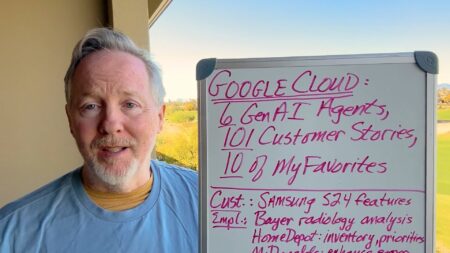
“Without data, you’re just another person with an opinion,” said quality pioneer W. Edwards Deming. He’s right, of course, but his quip covers just half the story. As we’ve discussed, “data” is the raw material from which one manufactures “information.” If you’re a CXO, you’re likely drowning in data, even when you lack the necessary information to do your job. In this article, we’ll cover for key ways to harness that data so it becomes information that enables critical decision-making.
The Art and Science of Turning Data Into Information.
- “Begin with the end in mind,” as Steven Covey famously said in his book, “The 7 Habits of Highly Effective People.” When it comes to information, this principle means CXOs need to stop and think hard about what information they need: type (defects, dollars, whatever); granularity (approximate to exact); timeliness (monthly, daily, right this minute); or presentation (tabular, graphical, mixed reality). Even a great CDO (chief data officer) can’t read your mind, so make it easier for data professionals to get you when you want, when you want it, and in the form you want.
- Understand trade-offs. It’s important to work with your CDO to understand the trade-offs inherent in your desires. For example, I had a client that wanted perfectly accurate payroll data and built processes to ensure that every number was perfect before publication. The problem was that field managers needed approximate data on hours worked (versus planned/budgeted) ASAP to manage labor costs. Perfect data two weeks late allowed frightful labor cost overruns (but the FICA and FUTA calculations were always correct!)
- Actual data is messy, so build “data-cleansing” processes. In the ideal world taught in school, our data is always present and always correct, so our grad school problems have neat answers. Not so in the real world. Data arrives late (one of six manufacturing lines had a communication problem); some data is just missing (the manufacturing line sensor was broken); data values are wrong (a customer’s electric meter reads 100 times what it should); data is duplicated (a trading partner sent yesterday’s dataset again today); data is fabricated (a partner sends misleading data to cover up a problem.) I can go on and on — the more data one has worked with the more data failure modes one has seen! As a CXO, you aren’t fixing data errors — that’s for the CIOs or CDOs teams. But it’s important that you think back to the “data failure modes” you’ve seen and share your experience with the data acquisition/cleansing team — after all, your deep and broad experience got you into the C-suite! And it’s equally important that you regard the information you receive with a skeptical eye. “If you see something, say something” applies to information output, especially when dealing with new data sources or new data transformation algorithms. Perhaps you remember the “truly astronomical” data problem NASA created with its Mars Climate Orbiter project? Some teams used metric measurement units, and others used English measurement units, and the result caused the loss of a $125M spacecraft.
- Sanity-check your outputs. I’m so old that I started my engineering studies equipped with a slide-rule rather than a calculator. Slide rules give one the digits of the answer, but NOT the decimal point (in other words, you get “314159” and it’s up to you to realize that means “3.14159” rather than “31.4159”). To this day, 40-plus years later, I mentally check every calculation I see for decimal-place (i.e., orders of magnitude) errors. And let me tell you: Newspaper and magazine articles, social media posts, and even books are loaded with calculations that are off by 10 times, 100 times, or 1,000 times. Get into this same “orders of magnitude” habit, even if you didn’t experience the joys of using 17th-century tools as we boomers did.
Here’s a more general — albeit more specialized — sanity check, called “dimensional analysis.” If you work in STEM disciplines, you undoubtedly deal with “dimensional” quantities such as miles/hr (speed), kilos/cubic meter (density), KVA (kilovolt-ampere) (power), etc. When checking a calculation, first put the exact numbers (which may be weird fractions or long decimal strings) aside and check the “dimensions” of those numbers. If a data analyst lacks an intuitive feel for your particular data domain, it’s easy to write the program to compute “cubic meters/kilo” rather than “kilos/cubic meter.” By using dimensional analysis, you can ensure that the correct conversions are being done and that the units match up. If you work with dimensioned numbers in engineering or science, you probably do this already, even if you’ve not been explicitly taught dimensional analysis.
Final Thoughts
Data is vital. Data plus judgment plus context enables effective decisions and actions. But data in a vacuum is a dangerous thing. As a CXO information consumer, be careful you know what product you’re actually “buying”!
Want more tech insights for the top execs? Visit the Leadership channel:








